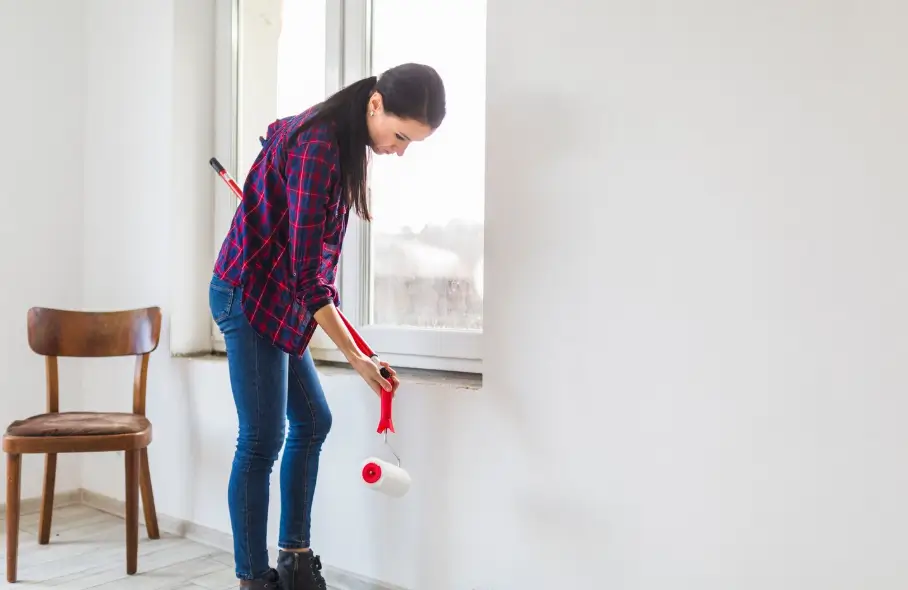Interior painting frequency depends on multiple factors including paint quality, room usage, environmental conditions, and personal preferences. While general guidelines suggest repainting every 5-10 years, actual timing varies significantly based on specific circumstances in each room. Understanding factors that affect paint longevity helps homeowners plan maintenance schedules and budget for interior painting projects effectively.
The decision to repaint involves both aesthetic and protective considerations. Fresh paint maintains home value, creates clean living environments, and allows for style updates that keep homes feeling current. Recognizing when rooms need repainting—and planning accordingly—ensures homes always look their best while preventing paint degradation that becomes more expensive to address.
General Guidelines for Different Rooms
Different rooms require different repainting frequencies based on their usage patterns, environmental conditions, and exposure to wear factors. High-traffic areas need more frequent attention, while seldom-used spaces can go longer between paint jobs.
Living rooms and dining rooms typically need repainting every 5-7 years under normal conditions. These spaces see moderate traffic but don’t experience the moisture or wear that affects other areas. Quality paint in these rooms maintains its appearance longer because they’re protected from direct sunlight and moisture exposure.
Bedrooms often last 7-10 years between paint jobs because they experience less traffic and fewer environmental challenges. Master bedrooms may need more frequent painting due to higher usage, while guest rooms can often wait longer between refreshes.
Kitchens require repainting every 3-5 years due to cooking moisture, grease exposure, and frequent cleaning. The combination of humidity, temperature changes, and food-related stains takes a toll on paint finishes. High-quality paint and proper ventilation can extend kitchen paint life.
Bathrooms need attention every 3-4 years because humidity and moisture cause paint degradation faster than in other rooms. Bathrooms with poor ventilation may need even more frequent painting, while those with good airflow and quality exhaust fans can go longer.
Children’s rooms often require repainting every 3-5 years due to higher wear from toys, fingerprints, crayon marks, and general activity levels. Room usage changes as children age, sometimes extending time between paint jobs.
Hallways and stairways see heavy traffic that causes scuff marks, fingerprints, and general wear. These areas typically need repainting every 3-5 years to maintain clean appearances.
Factors That Accelerate Paint Degradation
Several environmental and usage factors cause paint to deteriorate faster than normal, requiring more frequent repainting schedules. Understanding these factors helps homeowners anticipate maintenance needs and take steps to extend paint life.
Direct sunlight exposure causes fading and color changes that make rooms look tired even when paint film remains intact. South-facing rooms and those with large windows often need repainting more frequently due to UV damage.
High humidity levels cause paint problems including mildew growth, poor adhesion, and color changes. Bathrooms, kitchens, and basements are particularly susceptible to humidity-related paint issues.
Temperature fluctuations cause paint expansion and contraction that can lead to cracking, peeling, and adhesion problems. Rooms with poor insulation or heating/cooling issues may experience premature paint failure.
Heavy traffic areas show wear through scuff marks, fingerprints, and general soiling that makes paint look dirty even when the coating remains sound. These areas often need cleaning more frequently and repainting sooner.
Poor ventilation traps moisture, cooking odors, and other contaminants that affect paint performance. Rooms without adequate airflow often develop paint problems including mildew, odor absorption, and premature failure.
Low-quality paint breaks down faster than premium alternatives, requiring more frequent repainting cycles. Cheap paint may save money initially but costs more over time through frequent replacement needs.
Signs That Indicate Repainting Time
Visual cues and performance issues indicate when rooms need repainting regardless of time since the last paint job. Recognizing these signs helps homeowners address paint problems before they become more extensive and expensive to correct.
Fading or color changes make rooms look tired and dated even when paint film remains intact. This issue particularly affects rooms with sun exposure or those painted with lower-quality paints that don’t resist color changes.
Stains that cannot be cleaned indicate paint has absorbed contaminants that penetrate beyond surface cleaning capabilities. Kitchen and bathroom stains often fall into this category, requiring repainting to restore clean appearances.
Scuff marks and wear patterns that resist cleaning show paint film breakdown in high-traffic areas. These areas often need touch-up painting or complete repainting depending on wear extent.
Peeling or flaking paint indicates adhesion problems that require surface preparation and repainting. This issue often starts in moisture-prone areas but can spread if not addressed promptly.
Cracking or alligatoring shows paint film breakdown that allows moisture infiltration and further deterioration. These problems require complete paint removal and repainting with proper surface preparation.
Mildew or mold growth indicates moisture problems that paint cannot resist. These issues require cleaning, moisture source elimination, and repainting with mildew-resistant formulations.
Nail pops, holes, and other surface damage that accumulates over time makes rooms look neglected. While these issues can be addressed with patching and touch-up painting, extensive damage often justifies complete repainting.
Extending Paint Life Through Proper Maintenance
Regular maintenance extends paint life significantly while keeping rooms looking fresh between major repainting projects. Simple care procedures prevent minor issues from becoming major problems that require complete repainting.
Regular cleaning removes dirt, dust, and contaminants that can degrade paint surfaces over time. Gentle cleaning with mild soap solutions maintains paint appearance while removing substances that could cause staining or film breakdown.
Touch-up painting addresses minor damage before it spreads or becomes more noticeable. Keep leftover paint for touching up nail holes, scuff marks, and small damaged areas that develop over time.
Humidity control through proper ventilation and dehumidification prevents moisture-related paint problems. Use exhaust fans in bathrooms and kitchens, and maintain consistent temperature and humidity levels throughout the home.
Furniture placement and protective measures reduce scuff marks and damage in high-traffic areas. Wall protectors behind furniture, door stops to prevent damage, and careful placement of artwork prevent common paint problems.
Prompt cleaning of spills and stains prevents permanent damage that requires repainting. Address cooking splatters, beverage spills, and other contaminants immediately before they penetrate paint films.
Quality Considerations & Long-Term Planning
Paint quality significantly affects repainting frequency and overall maintenance costs. Premium paints cost more initially but provide better coverage, durability, and appearance retention that extends time between paint jobs.
Higher-quality paints resist fading, staining, and wear better than budget alternatives. They also clean more easily and maintain their appearance longer, reducing overall maintenance requirements.
Proper surface preparation extends paint life regardless of paint quality. Clean surfaces, proper priming, and good application techniques ensure paint adheres well and performs as intended.
Color choices affect maintenance frequency and appearance retention. Light colors show dirt and wear more readily but resist fading better than dark colors. Consider maintenance implications when selecting paint colors.
Sheen selection impacts both appearance and maintenance requirements. Higher sheens resist stains and clean more easily but show surface imperfections more readily. Choose sheens appropriate for each room’s usage and appearance requirements.
Planning & Budgeting for Interior Painting
Strategic planning helps homeowners manage interior painting costs while maintaining attractive living spaces. Create maintenance schedules that spread costs over time rather than requiring major expenditures all at once.
Rotate painting schedules so different rooms get painted in different years. This approach spreads costs while ensuring the entire home never looks neglected. Priority should go to high-traffic areas and rooms showing the most wear.
Professional painting services provide quality results that often last longer than DIY work. Consider professional painting for high-visibility areas while handling less critical spaces yourself to balance cost and quality.
Material planning includes keeping leftover paint for touch-ups and selecting colors that coordinate throughout the home. This planning reduces waste while ensuring consistent appearances.
Interior painting frequency varies based on room usage, environmental conditions, and paint quality, but proper planning ensures homes always look their best. Monitor paint condition regularly, address problems promptly, and maintain realistic schedules that balance appearance requirements with budget considerations. Quality materials and proper maintenance extend paint life while reducing long-term costs and ensuring your home remains a source of pride and comfort.

